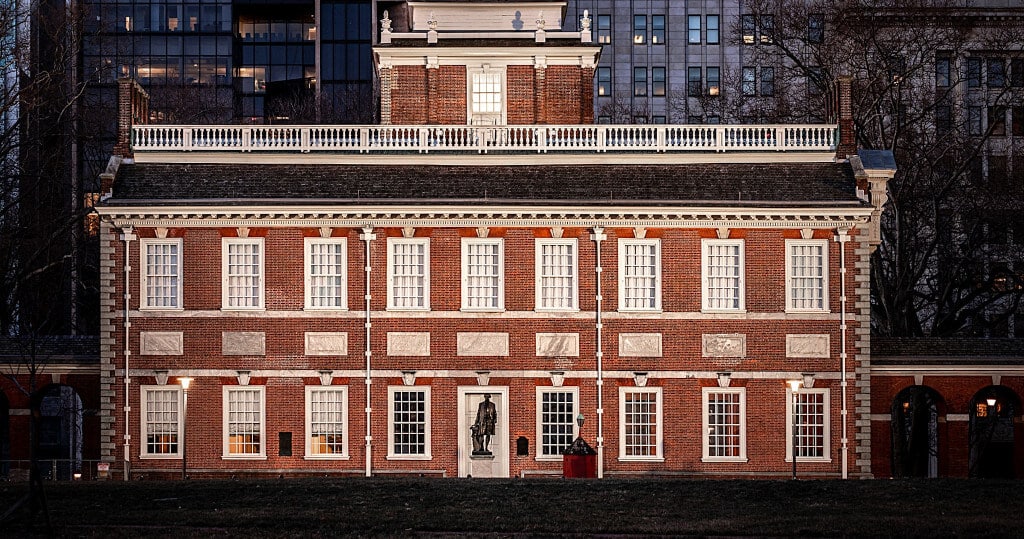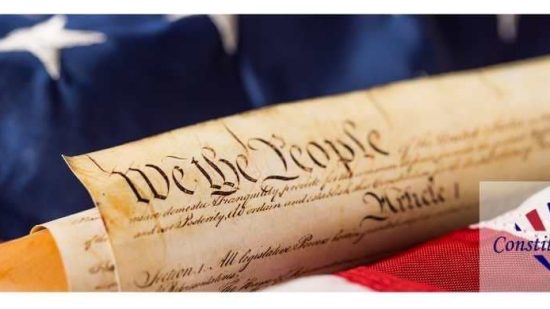The Bill of Rights is not part of the United States Constitution but rather a series of amendments to the Constitution. It is housed within the Constitution but not a part of the document itself.
These amendments were introduced a short time after the Constitution’s finalization to adapt the document to guarantee certain rights.
Since its creation, further amendments have been added alongside the initial Bill of Rights as the United States has evolved.
The Constitution and the Bill of Rights Have Very Different Purposes
The Constitution focuses on the responsibilities of the government of the United States and, in turn, its citizens.

The document outlines the roles and structure of different parts of the government, such as the difference between the state government and the federal government.
Both arms of the government have very different responsibilities and powers for creating and upholding laws. Therefore, the Constitution needed to clarify this so both sides could be held accountable for their actions.
Disagreement at the Constitutional Convention
During the creation of the Constitution at the Constitutional Convention in Philadelphia, 1787, there was some dispute over the document and its impact on the people of the United States.

Federalists believed that the Constitution at the time was more than enough as guidance on the powers and limitations of the government.
They felt that it was clear that those powers not given to the federal government and outlined in the document, therefore, belonged to the people.
The Ratification Process for the Constitution Did Not Go Smoothly
Anti-Federalists, such as Thomas Jefferson, had a different idea. They believed that the Constitution needed to lay out the rights and powers of the people in greater detail.

Commitment to guaranteeing these rights in writing as part of the national Constitution would provide greater security for individual liberties.
Three delegates refused to sign on the final day of the Constitutional Convention because there was no Bill of Rights.
Furthermore, there was support for the notion publicly, as some citizens began to oppose the government.
James Madison’s proposed amendments
James Madison created a series of proposals for amendments to the Constitution that focused purely on the people’s basic rights rather than the structure or role of the government.

Madison was one of those in favor of the original Constitution alone. But, there was an agreement that a compromise was necessary to secure ratification and avoid any divide.
Elbridge Gerry’s formal motion for the Bill of Rights at the Convention and the initial suggestion by George Mason meant potential ongoing conflict with Virginia and Massachusetts.
The idea was to use concepts and rights in similar documents, such as the English Bill of Rights and Virginia Declaration of Rights, and adopt those in the Constitution.
The US Added the Bill of Rights in 1791
It took a while for the government to add the Bill of Rights to the United States Constitution. Congress, which contained many pro-Constitution Federalists, didn’t see the Bill of Rights as a priority.

James Madison first introduced his proposed amendments in June 1789, keen to secure the American people’s support given their desire for individual freedom and liberty.
The House of Representatives passed a joint resolution that contained 17 amendments to the Constitution – using Madison’s proposal as their blueprint.
10 Amendments to the original Constitution
The Senate subsequently reduced that to 12 amendments. By October 1789, copies of those 12 amendments went to the states for ratification. Two years later, 10 of those had been returned, and the Bill of Rights was complete.

Get Smarter on US News, History, and the Constitution
Join the thousands of fellow patriots who rely on our 5-minute newsletter to stay informed on the key events and trends that shaped our nation's past and continue to shape its present.

As with the rest of the process of amending the Constitution, the creation and application of the Bill of Rights has been a long evolving process.
One area of debate and friction was extending the protection of the Bill of Rights to state government.
It wasn’t until the early 20th century that federal and state courts began to apply the Fourteenth Amendment through incorporation.
Of the two amendments that didn’t achieve ratification by 1789, one was adopted in 1992, and the other is still pending. A further 17 Amendments have also achieved ratification since.
The Finalized Bill of Rights in 1789
The ten ratified amendments of 1789 were set out in writing in official engrossed copies and housed within the Constitution. This Bill of Rights contains the following.
- The First Amendment: The prohibition of any law that would impede free speech, freedom of the press, peaceful protest, petitioning of government, or freedom of religion.
- The Second Amendment: The right to bear arms.
- The Third Amendment: No soldier shall be quartered in any house without the owner’s consent.
- The Fourth Amendment: The right to be secure in one’s own home without risk of searches or seizures.
- The Fifth Amendment: Protection against double jeopardy, self-incrimination, and the right to due process.
- The Sixth Amendment: The right to a fair and speedy public trial with an impartial jury and the chance to confront witnesses and gain the assistance of counsel.
- The Seventh Amendment: The right federal cases with claims over twenty dollars will go before a jury.
- The Eighth Amendment: The protection against cruel and unusual punishments and excessive bail.
- The Ninth Amendment: The notion that the people have fundamental rights outside of those within the Constitution.
- The Tenth Amendment: The notion that those powers not granted to the federal government are reserved to the states or the people.

Is the Bill of Rights Part of the Constitution?
In short, while we see the Bill of Rights as part of the United States Constitution due to its housing, it is its own document with a crucial place in American history.
Its adoption in 1791 guaranteed many fundamental rights of the people not clarified by the Constitution itself.





One Response
Please comment on the Act of 1871 that supposedly made the United States into a corporation instead of a republic.